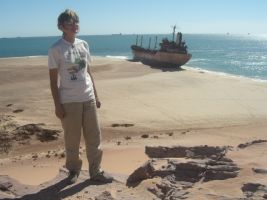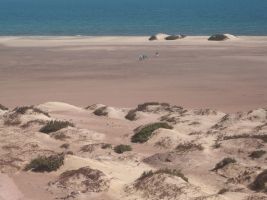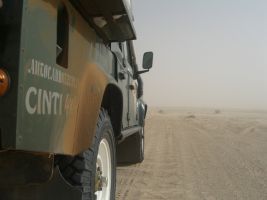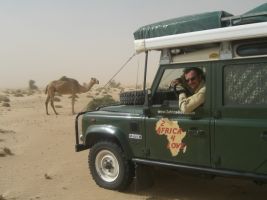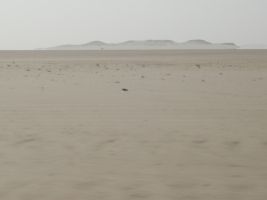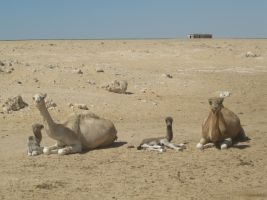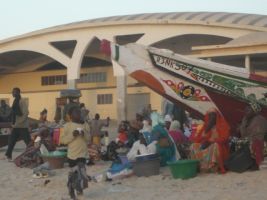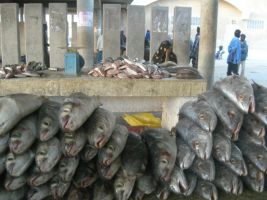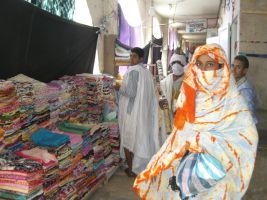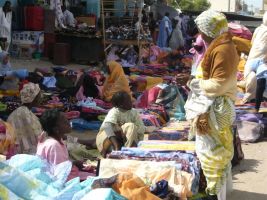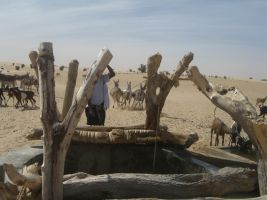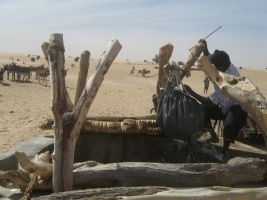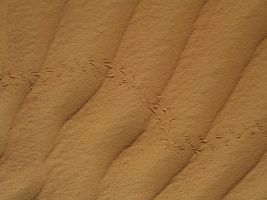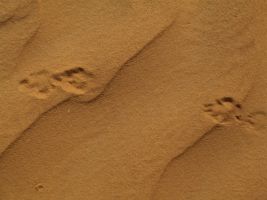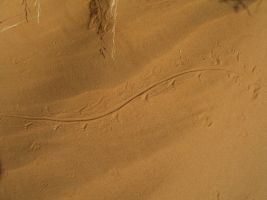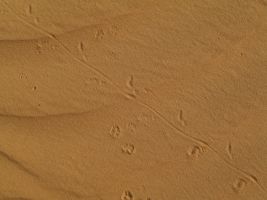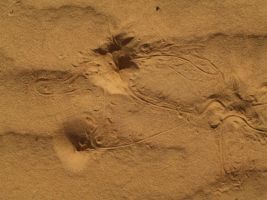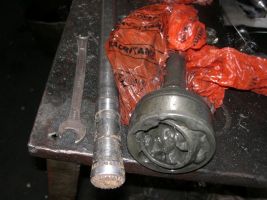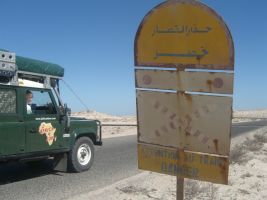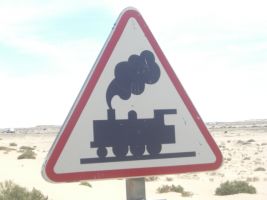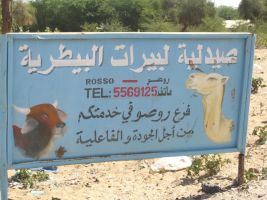
 Italia
Italia France
France Spain
Spain Morocco
Morocco Mauritania
Mauritania Senegal
Senegal Mali
Mali Burkina
Burkina Ghana
Ghana Togo
Togo Benin
Benin Nigeria
Nigeria Cameroon
Cameroon Gabon
Gabon Sao Tomè
Sao Tomè Gabon 2
Gabon 2 Congo
Congo Congo DCR
Congo DCR Angola
Angola Namibia
Namibia Sud Africa
Sud Africa Namibia 2
Namibia 2 Botswana
Botswana Zimbabwe
Zimbabwe Botswana 2
Botswana 2 Sud africa 2
Sud africa 2 Swaziland
Swaziland Mozambico
Mozambico Malawi
Malawi Tanzania
Tanzania Rwanda
Rwanda Uganda
Uganda Kenya
Kenya Etiopia
Etiopia Sudan
Sudan Egitto
Egitto Libia
Libia Tunisia
Tunisia Malta
Malta
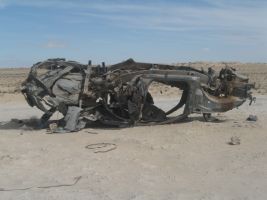
No-man’s-land
The West Sahara asphalt vanishes rapidly within a few metres after the last barrier has been lifted by the Moroccan army. We are in no-man’s-land. To us, it’s just a road towards Mauritania, but for many desperate African immigrants heading towards Morocco, it is a road of hope, that could lead to a chance of employment in Europe.
All around we find abandoned cars and vans. It is difficult to decipher their origins; some careless drivers have ventured off-road and encountered land-mines. Twisted frameworks and shells of various types and ages lie abandoned in the sand under the scorching sun.
The route will be uncertain: crossings, junctions and diversions…
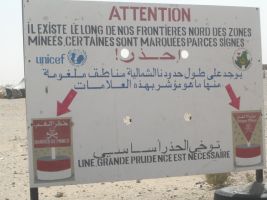
The difference between the two borders is astonishing. Before we reach the frontier office we find rubbish filled wooden shacks. After finding the police station office we are given - without any trouble - a 3-day Visa permit to cross the State (if you head straight to Senegal) or to reach the Capital and obtain an extension. We pay 10 euros a head, they also give us change in the same currency. Very polite.
Next, the customs office; only the car owner fills in the application form with his/her details and those of the vehicle. We are charged 10 euros for the paperwork, we are not given a receipt: The “Carnet de passage” is not needed here.
Pay particular attention to the number of days the officials write on the Visa (the number of days you want to remain) and to the name of the customs you wish to exit from.
Next, soldiers check the vehicle. We got the distinct impression that this was simply an excuse to ask for money. Usually, any alcohol found is enough, as alcohol is prohibited in this Islamic country. An allowance for personal use is actually permitted for foreigners, but they pretend not to know this!! Anyway, it seems whether you’re carrying alcohol or not, they will come up with some reason to relieve you of between 5 - 20 euros. We had 6 bottles of wine, we ended up paying 10 euros and were there for just 1 hour and 20 mins
You could, on the other hand - if you have a lot of time on your hands - dig in your heels and stand your ground. And, you never know, you may be able to get away without paying anything! Although, I would very much doubt it. . We heard that some poor soul was there for 9 hours…..
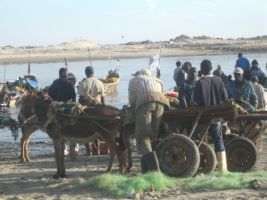
Nouadhibou - 22 nov 2007
Campsite at Ali’s: comfortable and clean.
Baia du Levrier GPS N20°54.948’ W17°03’01”. There is a room available where you can cook and eat. It’s near the centre, has a clean shop and a quick Internet point. The city is nothing to write home about, a little dirty and it hasn’t got a “centre”. We suggest you visit the fish market, at the back of the stadium. We have met Giovanni, a French guy who lives on the boarder of Piemonte. He speaks Italian and has a yellow Toyota. He’s travelling alone and he’s been coming to Mauritania for over 30 years.
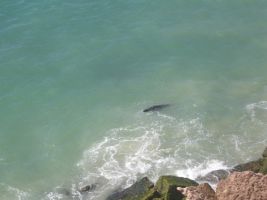
Cap Blanc - 23 nov 2007
We travel on and arrive at Capo Bianco. GPS N20°46.242’ W017°02.989’. You pay 400 UMG to get in, the equivalent of just over a euro. The sea is lovely, and, there’s an old ship-wreck on the beach. There is a lighthouse which is under construction, therefore not a great sight! If you’re lucky, you could spot the last of the White Nuns…Oh look! There they are!!
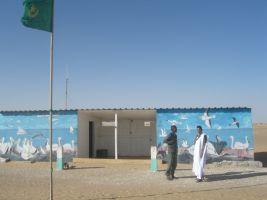
Banc d’Arguin National Park - 23 nov 2007
From the main road you pass a petrol station with a little market shop called Gare du Nord, take the next right and head towards the hut with a flag. Watch out! You see the sign post only if you are travelling from the south. We pay an entrance fee and we head towards Iwik, a village on the coast, where we can take a boat to visit the many islands and do some bird watching. It is 60 km of unsurfaced road, which keeps changing into sandy dunes. It’s really exciting to drive in these conditions, navigating only with GPS. However, you need to be careful not to end up in the fine soft sand.
After two and a half hours, we get to the campsite. We use the local Mauritanian tents (Khaima) and, for dinner, we eat a fish dish. Whenever we can, we avoid using our supplies, as we enjoy trying-out the local initiatives. Here, a water truck brings in water from 50 km away. A shower costs around 3 euros (1000 Ouguiya).
We spend a pleasant evening playing the guitar with some Italians we met that evening at the campsite
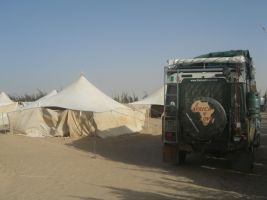
Parco National Du Banc d’Arguin - 24 nov 2007
During the night there is a very strong wind. In the morning, the wind is still blowing and the view is quite “foggy” so we can’t take the boat trip (by the way, very expensive at 120 euro!!). Mauritania is not cheap. Sidi tells us to wait, as by midday the wind will die down. After one hour the wind gets stronger. We decide to leave.
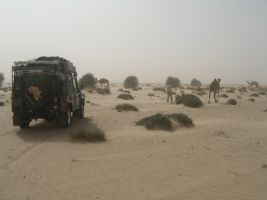
Driving in this fog is no different from driving in fog in Modena. Only here, there are only the GPS points to follow. Further on we have some interesting encounters with camels. After 2 hours we’re back on the asphalted road leading to the capital.

Towards the capital
Only the overloaded lorries disrupt the scenery. A straight line; straight but also circular, 360°. We appear to be at the centre of a circle. Wherever you look, the horizon divides the two worlds into half. Perfectly. Land and sky. The line is precise and perfect. Sand on the ground. Mirage on top.
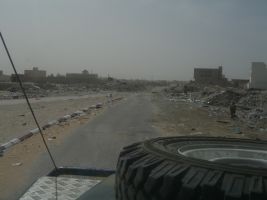
Arrival at the capital - Nouakchott - 24 Nov 2007
What a shame that the main road leading into the capital is in such a state!! After kilometers of beautiful sandy roads, the dunes have now been replaced with pile after pile of rubbish!!! Mountains of the stuff! As far as the eye can see, divided only by the asphalted road!!
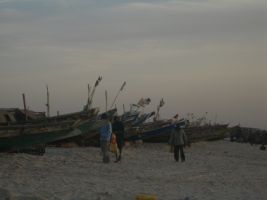
Nouakchott - 24 nov 2007
We camp at the Auberge du Sahara. GPS N18°06.161’ W15°59.838’. Nice place with a terrace and kitchen. Wifi and hot shower free of charge. 1500 UM each. A quiet place, if it were not for the muezzin, who, from the minaret, at particular times during the day and night calls Muslims to prayer. Startling if your not used to the sound, especially during the night!!
This city is quiet dirty and not particularly interesting, only the zones of “Marche Capital” and the fish market, where we bought 1Kg of Lot, delicious with spaghetti and cooked “alla Livornese”.

Louis e Pilar
Louis and Pilar, a Spanish couple, camp next to us. They’re on their way back home. They’ve just visited Gambia and Senegal in a white Land Rover. During our chat with them, they tell us of their experiences in Senegal and, in particular, how Senegal is getting a reputation of having one of the most allegedly untrustworthy police forces in West Africa.
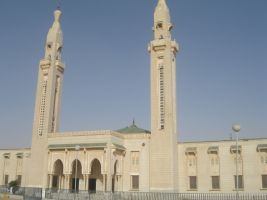
Nouakchott - 26 nov 2007
We finally find the entrance to this city N18°05.340’ W15°58.255’, after being sent left, right and centre by the army.
On release of 15 euros each, we obtain a Visa for a month. We meet Giovanni again. He invites us to travel with him to Atar, our planned destination. He informs us, that it will take us 2 to 3 days. We like the idea, as we know he is experienced in traveling in this area for over 30 years. We prefer to see the desert rather than travel the 500 km on asphalted road that we would have done on our own. We decide to leave the very next day .
On the way back to Auberge Sahara, the Turbo coupling breaks. Fortunately, the prudent McDaniel has provided us with a spare one, and whilst we wait for our fish dinner, I change the part.

Off we go!!! 27 Nov. 2007
It’s 9 o’clock. We leave with Giovanni for Atar through the desert. There are 600 km to cover, we insert the GPS points that we have copied from a reliable book (there are actually points for 6 days). Giovanni reckons that we should be out in 2 to 3 days, as he knows the route and it’s quiet easy.
The scenery is spectacular. Red dunes and white long stretches…. Lakes dried up by the sun. It reminds us of Namibia, but with lower dunes. We get to a well at about 80 km inland, where shepherds with their flocks, collect water which is then loaded onto donkeys to carry. Spectacular!!!
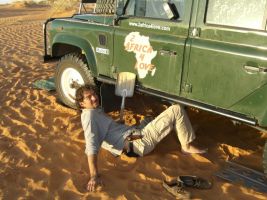
Trouble ahead 27 Nov 2007
After the well, we continue snaking our way through the 10-15m high red sand dunes. Gianni, at the front drives confidently. K7 behaves very well, even though she’s heavily loaded. Driving here is fun!! After 15 km we meet other drivers; it is reassuring to see others travelling.
After 25km of dunes we stop to admire the panorama. As I re-start the K7, she sinks into the sand…A terrible noise from the front of the car makes me think that all is not well! We try and clear the sand from around the tyres…we are towed by the Toyota but the rear tyres continue to sink even deeper…this is not good news….We’re 120 km away from the asphalted road, 150 from the nearest place with a mechanic….Stuck in the desert amongst the dunes…now what?
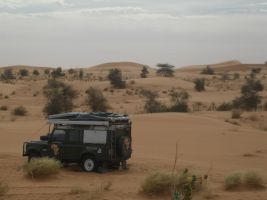
What are we to do? 27 Nov 2007
Something is seriously broken. Luckily, we have our Satellite phone. We call McDaniel straight away (my loyal mechanic in Modena) and I explain to him what has happened. Communication is impossible so we have to hang-up. We realize that the problem is with the front-wheel drive. Perhaps the axle shafts or the differentials?….. We call for a mechanic from the capital and ask for a 4x4 rescuer to tow us to the asphalted road…. We are told the rescue will cost 1500 euros…..we nearly faint …
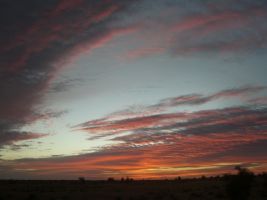
First day in the Desert – 27 Nov 2007
Then, I remember the Sahara Hotel where we stayed. We call them and they tell us that a 4x4 vehicle and trailer will be sent out to us the next morning. We are quite puzzled, as the dunes we have just covered are difficult enough for an off-roader, let alone with the addition of a trailer.
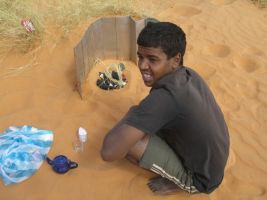
Second day in the Desert – 28 nov 2007
It’s still dark when Giovanni and I leave towards the nearest village to look for a vehicle that could tow our K7. We leave Laura behind among the immense sand dunes.
If only there was an agricultural village with agricultural machines, we could sort it out with a tractor. But here, we only meet shepherds with goats and camels. No tractors.
We meet the Sahara Hotel’s off-roader (no sign of trailer) with four men on board. Together we drive back to Laura and K7…we get there at 1 o’clock. But, first things first…a cup of tea.
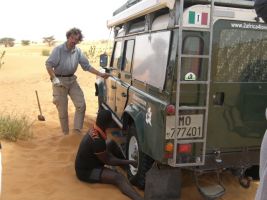
Literal translation of poem by Claudio:
We dig and postion the steel sheets
The wind blows the sand about our face
The sand swallows, the wheel goes deeper
Our backs bathed in sun and sweat
We dig and position the steel sheets
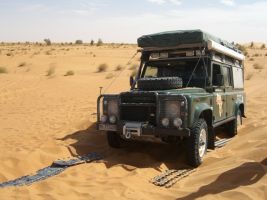
28 Nov 2007
After two hours K7 has moved just 12.5m. We now realize that it would be impossible to get the car to the asphalted road this way. The only alternative was to have the car repaired on the spot. We call a mechanic known by one of the four guys, and he tells us, that he could come out to repair K7 for 300 euros, but he will need a lift. We agree, the four guys head home, Giovanni goes with them to pick up the mechanic.

Third day in the desert - 29 Nov 2007
At 11 o’clock, Giovanni arrives with the mechanic.
K7 is jacked-up and we start to operate on her; the wind is blowing sand everywhere.
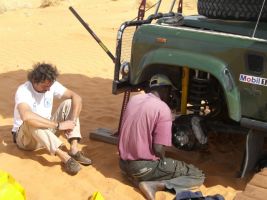
We eventually find the problem. A front axle shaft is split. We can fix it, we’re in luck… and the cost is less…but, despite swearing that he had left with one, the mechanic hasn’t got an axle shaft with him, only a differential… we’re jinxed. I look in my spare parts…I was sure I had one…but, I haven’t. I must have left it at home…The mechanic goes back to the village and says he will be straight back to repair the fault (3 hours there and 3 hours back?) “By 8 o’clock you’ll be at the Sahara Hotel” he says. Yeah right!, looks like another night in the desert…
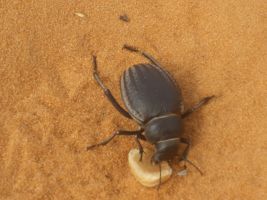
Traces in the sand
In the meantime, we’ve got plenty of time. On the sand we find our neighbour’s footsteps. It’s a desert beetle….
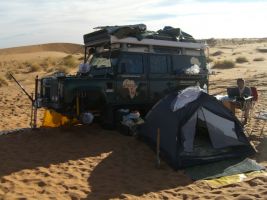
Fourth day in the desert - 30 Nov 2007
During the night we see the flash of lights. It could be a car, but we are not too sure…the lights get closer...it’s definitely a vehicle…and very able on the dunes. What could they want? We turn all the lights off and wait. We hear voices.….. The car comes closer…then passes by, it seems they haven’t seen us. The lights move away. Will they be back or are they just people passing through? We’ve heard that the Mauritania people are peaceful. But still, we are ill at ease.
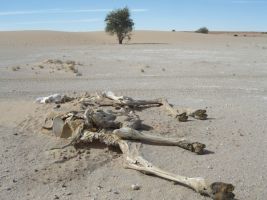
30 Nov 2007 – The damage is repaired
At first light everything appears different. The car is back, now we’re not so worried. From a black pick-up, three men with turbans ask us if everything is all right. We tell them we’re waiting for a mechanic to repair our Landrover. They ask us what we’re doing in the middle of the desert, we tell them about our journey towards Atar . They look to one another and laugh. The track to Atar is 20 km further North! Most probably, we lost our way after the well.
They ask us if we need water and then leave. We are left feeling like foolish tourists!!

30 Nov 2007 – The damage is repaired
Finally the mechanic arrives (in case you need him, his name is M’Bodj and his tel. is 00222-6714659). This time he has the right part with him. It’s not new…but new enough. We fit it and we start the car….good! It’s working! Once again K7 is snaking and darting among the dunes. We eagerly anticipate our next shower…in about 4 hours’ time at Hotel Sahara.
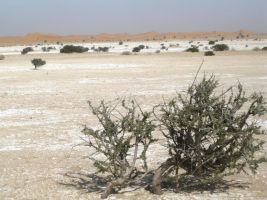
Towards Senegal - 2 Dec. 2007
We haven’t enough time to see Cinghetti, the most popular and (so it’s said) beautiful part of Mauritania. We’ve got an appointment in Senegal for the Marathon. Never mind. We’re heading towards the Diama frontier and not Rosso, as the latter isn’t particularly known for its uprightness!
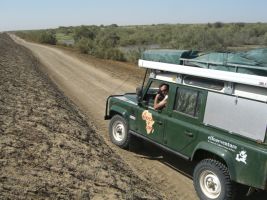
Diama Embankment Park – 2 Dec 2007
To get to Diama you need to travel 100 km across its park, which is a stopover for migratory birds.
In this season, the track is fairly easy; but, looking at the many potholes, in the rainy season it must be pretty difficult.
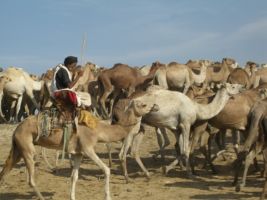
Bureaucratic Bulletin – 2 Dec 2007
At the frontier we happen upon a beautiful herd of camels. By stark contrast the bizarre world of bureaucracy begins. It takes 40 minutes to pass the Mauritanian frontier, and the Senegalese one in 1hour and 10 minutes (a record?). This is what we were asked and how much we paid:
Assumed park guard and a police officer (at the exit of the park) ask for 20 euros, we negotiate and give them nothing.
Mauritanian customs: asked for 10 euros, we negotiate and give them a pen.
Mauritanian police: asked for 10 euros, we negotiate and give them nothing. Watch out! In these offices, police protected officials are trying to sell car insurance, as happened to Heidi and Ross.
Toll bridge: asked for 10 euros, gave them 5
Senegalese police: asked for 20 euros, gave them10
Senegalese customs: asked for 10 euros, gave them nothing (with the Carnet de Passage)
Carte Brun car Insurance: it’s valid for 4 months and it should cover all the countries up to Nigeria: 85 euros (hope it’s good).
During a 30 km-journey from the border to S. Louis du Senegal we were stopped 5 times: we were asked for a “cadeau”(a gift) and a folding chair, but they ended up with nothing.
Warning! When you are stopped, they usually check: car insurance, driving licence,warning triangle, extinguisher, lights and indicators. If you are not in order, you will get an extortionate fine, which you might be able to half, but without a receipt!!
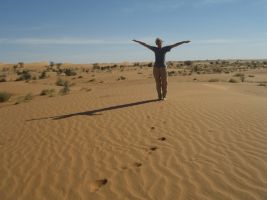
Our impressions on Mauritania
Mauritania is sand and desert. It’s the Sahara, in every shape and form. Its beauty lies in the Saharian landscape.
The cities we visited, like most, were dirty and not very interesting. People are amicable but always in search of a “cadeau”(a gift). Women wear very colourful dresses with a veil on the head.
It can be a very expensive country. There is no manufacturing, everything here is imported.
Police always expect a gift, if you refuse, they normally do not ask again.
